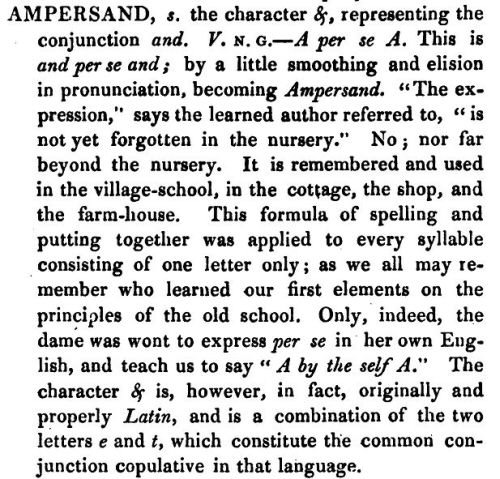Saturday, March 23, 2013
Why ampersand?
I've always been bothered by the bizarre-sounding etymology of Ampersand. The symbol itself is no mystery: just a stylized version of et. But the usual etymology for the name doesn't make a lick of sense. Supposedly some people said and per se while others said and. The symbol was meant to stand for either version, thus "[either] and per se [or] and" got condensed to Ampersand.
This morning I took the time to check it. Turns out I was right about the usual story: nobody ever said and per se as an alternative for and. But the real story is even stranger! Lots of people did in fact say and per se and. It was a peculiar recitation method in English schools 200 years ago.
From a rather roguish set of essays on language written in 1830:
 Odd that a classroom method of reciting short words got attached to this one character, but not to other symbols or words.
Odd that a classroom method of reciting short words got attached to this one character, but not to other symbols or words.
 Odd that a classroom method of reciting short words got attached to this one character, but not to other symbols or words.
Odd that a classroom method of reciting short words got attached to this one character, but not to other symbols or words.
